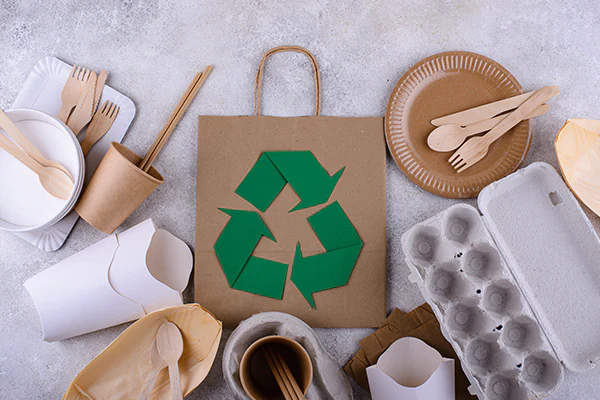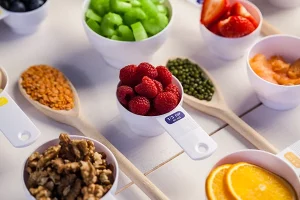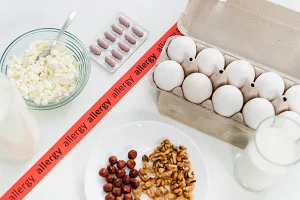The food industry has undergone a profound transformation in recent years, evolving beyond culinary excellence to prioritize sustainability. This shift encompasses two pivotal aspects: sustainable food packaging and the intricate world of nutritional labeling. This blog will discuss these intertwined dimensions, exploring their profound impact on the food industry, especially for our discerning B2B readers.
Sustainable Food Packaging
The demand for sustainable food packaging isn’t a mere trend; it’s a requisite. Conventional packaging materials have significantly impacted our environment, resulting in colossal waste and pollution. Sustainable food packaging emerges as the solution, employing eco-friendly materials that substantially reduce ecological harm.
- Eco-friendly Packaging Materials
Sustainable packaging materials extend to biodegradable plastics, compostable compounds, and recyclable packaging. These alternatives significantly minimize the environmental footprint, ushering in an era of diminished waste generation.
- Food Waste Reduction
Adopting sustainable food packaging aligns with our overarching objective of environmental conservation. Using materials that naturally decompose or can be efficiently recycled, we systematically reduce the accumulation of non-biodegradable waste. MenuSano is a great way to create your products while reducing food waste.
- Environmental Conservation
The adoption of sustainable food packaging aligns with our overarching objective of environmental conservation. Through the use of materials that naturally decompose or can be efficiently recycled, we systematically reduce the accumulation of non-biodegradable waste.
Nutritional Labeling
Nutritional labeling is an equally crucial facet of the food industry, catering to the discerning sensibilities of today’s health-conscious consumers.
The Significance of Nutritional Labeling
Nutritional labels provide in-depth insights into food products, encompassing caloric content, nutrient profiles, and ingredient composition. This informational transparency empowers consumers, enabling them to make prudent choices tailored to their dietary requirements and health concerns.
- Regulations and Compliance
Nutritional labeling operates under stringent regulations and guidelines established by authorities, most notably the Food and Drug Administration (FDA). These regulatory standards ensure accuracy and standardization, ultimately conferring consistency upon consumers.
The Intersection of Packaging and Labeling
Sustainability in packaging and precision in nutritional labeling are not siloed concepts; they can beautifully complement one another. Forward-thinking companies have embraced this synergy, elevating transparency in labeling and offering eco-friendly packaging as a standard.
A Holistic Approach
The food industry’s progression toward sustainability hinges on a holistic approach encompassing packaging and labeling. This approach, characterized by transparency and eco-friendliness, benefits consumers, our environment, and the industry.
- Challenges and Emerging Trends
The journey towards sustainable packaging and accurate nutritional labeling has its share of challenges.
- A study published in the International Journal of Environmental Research and Public Health highlights that maintaining rigorous hygiene standards is one of the key challenges in implementing reusable packaging systems. These hurdles include the quest for cost-effective, eco-friendly materials, the unswerving adherence to labeling regulations, and minimizing contamination risks in reusable packaging.
- According to a report by McKinsey & Company, the development and production of sustainable packaging materials can initially be more expensive, with eco-friendly alternatives costing up to 50% more than traditional materials.
The Silver Lining
Amid these challenges, optimism reigns as emerging trends and technologies continually refine sustainable packaging and nutritional labeling. Innovations are propelling the industry toward a sustainable, consumer-oriented future.
- Sustainable Packaging Growth: According to Grand View Research, the global sustainable packaging market is projected to grow at a CAGR of 6.2% from 2021 to 2028. This growth indicates the increasing adoption of sustainable packaging practices.
- Innovations in Nutritional Labeling: The food labeling market is witnessing technological innovations. For example, smart labels that provide real-time information about food products are rising. A report by Research and Markets estimates the smart label market to reach $10.11 billion by 2026.
- Consumer Demand for Sustainability: According to an article from MIT Sloan, there is a growing willingness among consumers to invest in products from companies dedicated to sustainability. In the United States, nearly half of consumers, 48%, expressed their readiness to alter their consumption patterns in order to lessen their environmental footprint.
Toward a Sustainable Future
In the ever-evolving realm of the food industry, sustainability is no longer a choice; it’s an imperative. Sustainable food packaging and precise nutritional labeling are pivotal players in this metamorphosis. Embracing both practices positions the industry to make substantial headway toward an environmentally responsible and consumer-centric future.
In a world where consumers scrutinize their food choices meticulously, businesses can set the gold standard by offering sustainable, transparent, and nutritious options. The seamless integration of sustainable packaging and nutritional labeling represents a greener, healthier, and more responsible future.
For companies striving to lead the sustainable food industry and enhance their nutritional labeling practices, the experts at MenuSano stand ready to assist you. Together, we can drive meaningful change in the food industry and our world. Contact Us to Learn More and Get Started on Your Journey Toward a Sustainable Future.



















